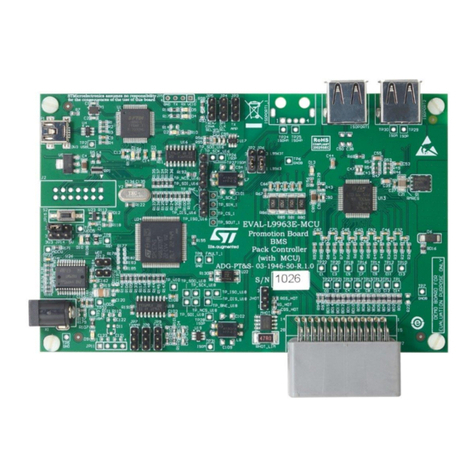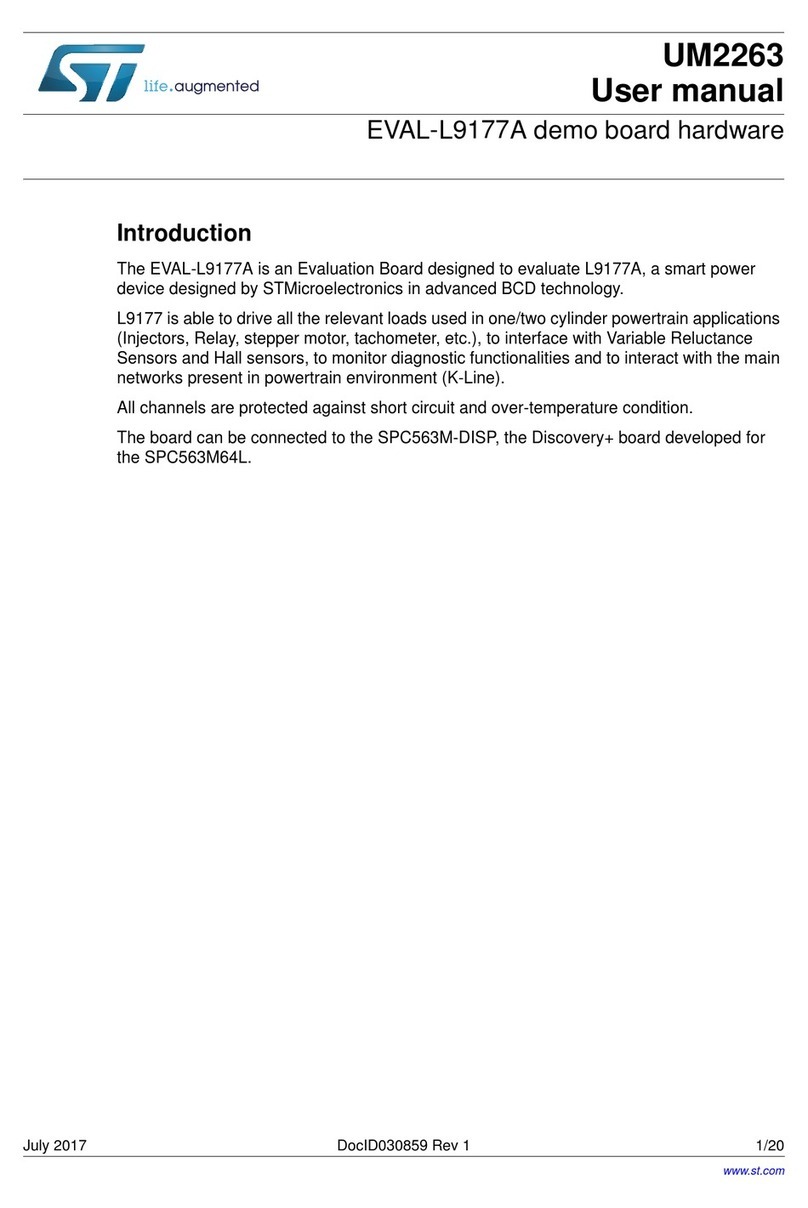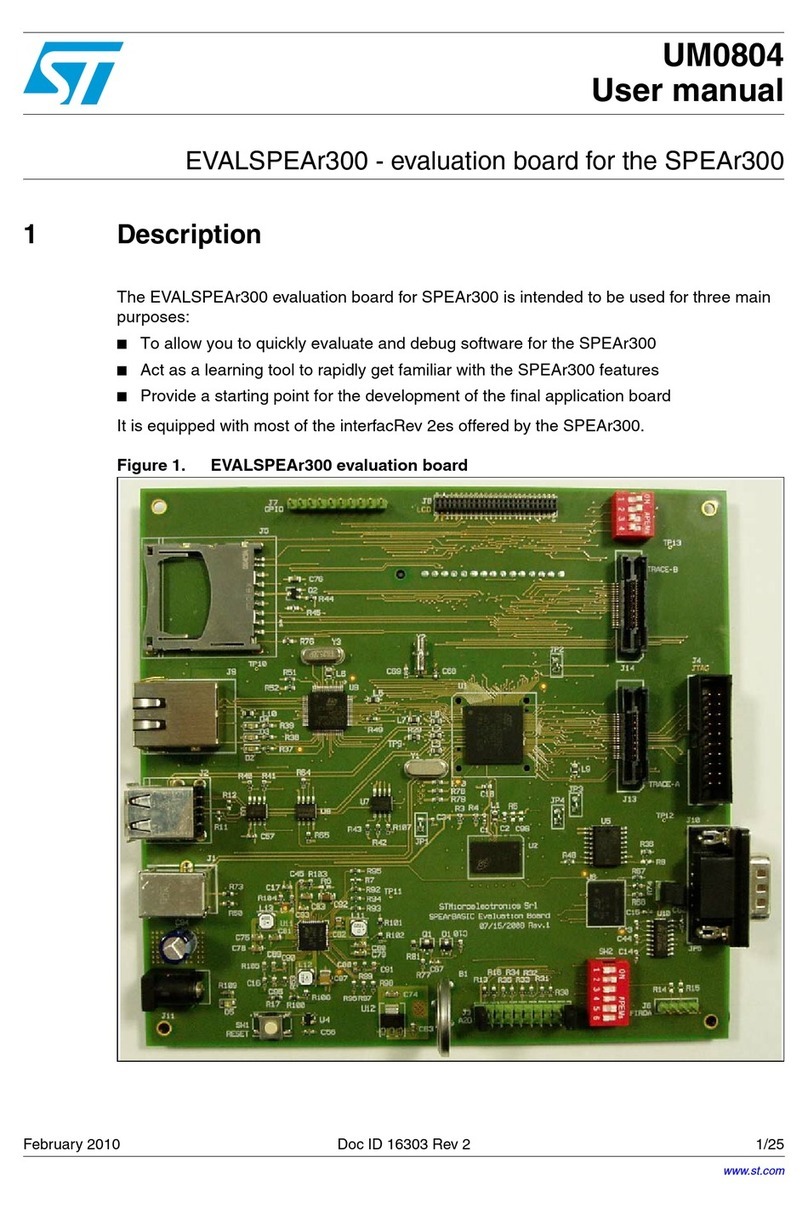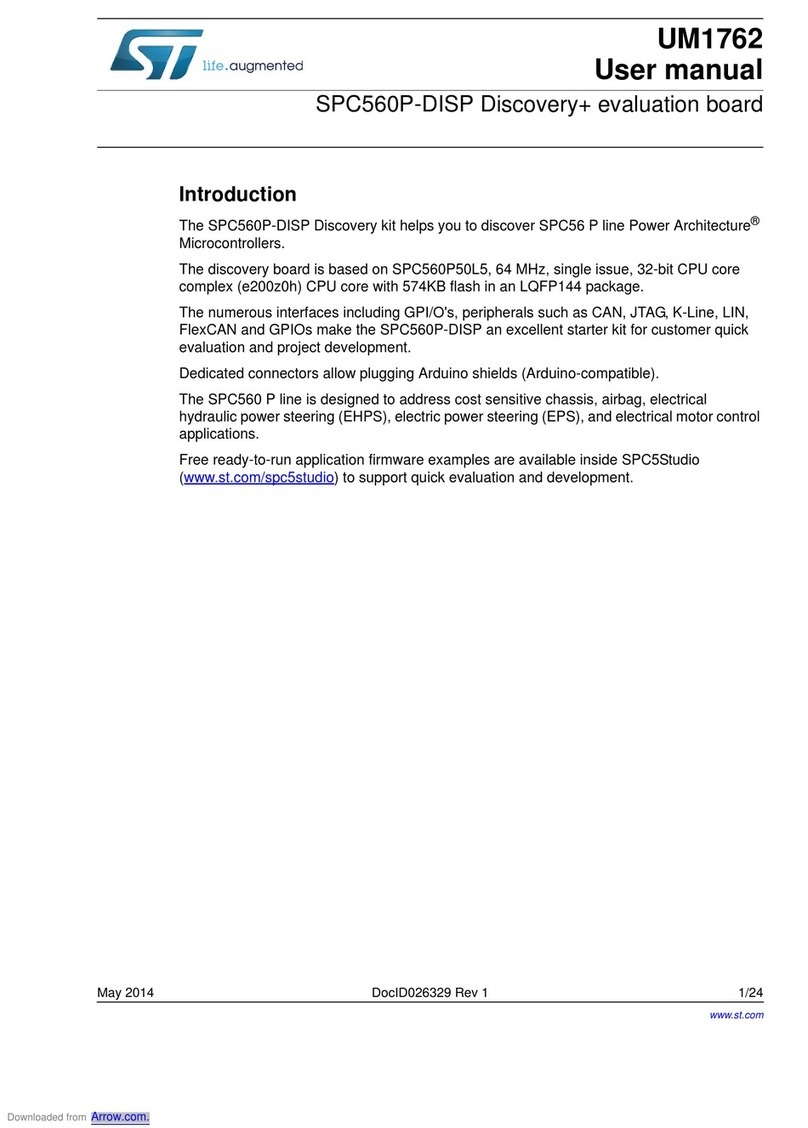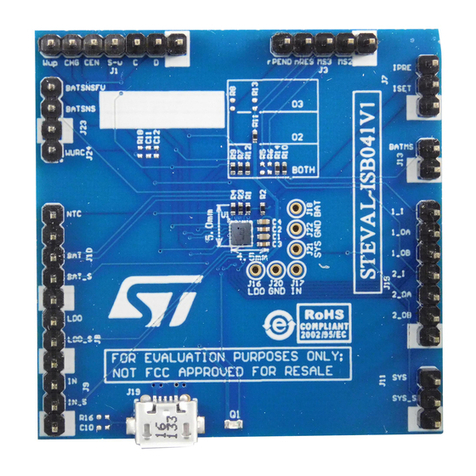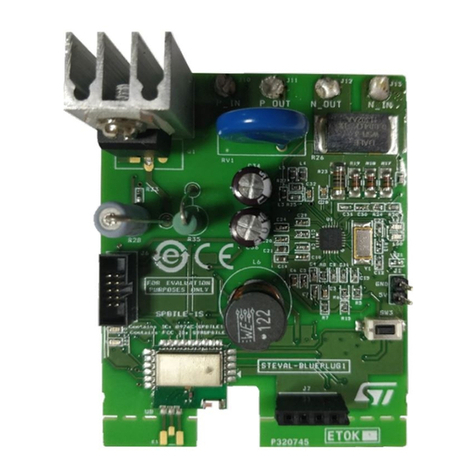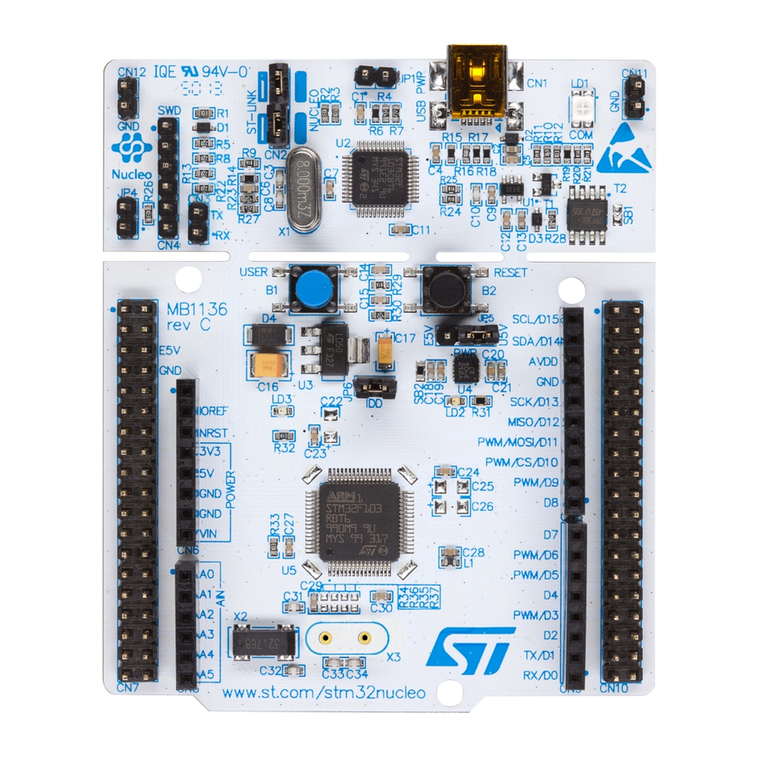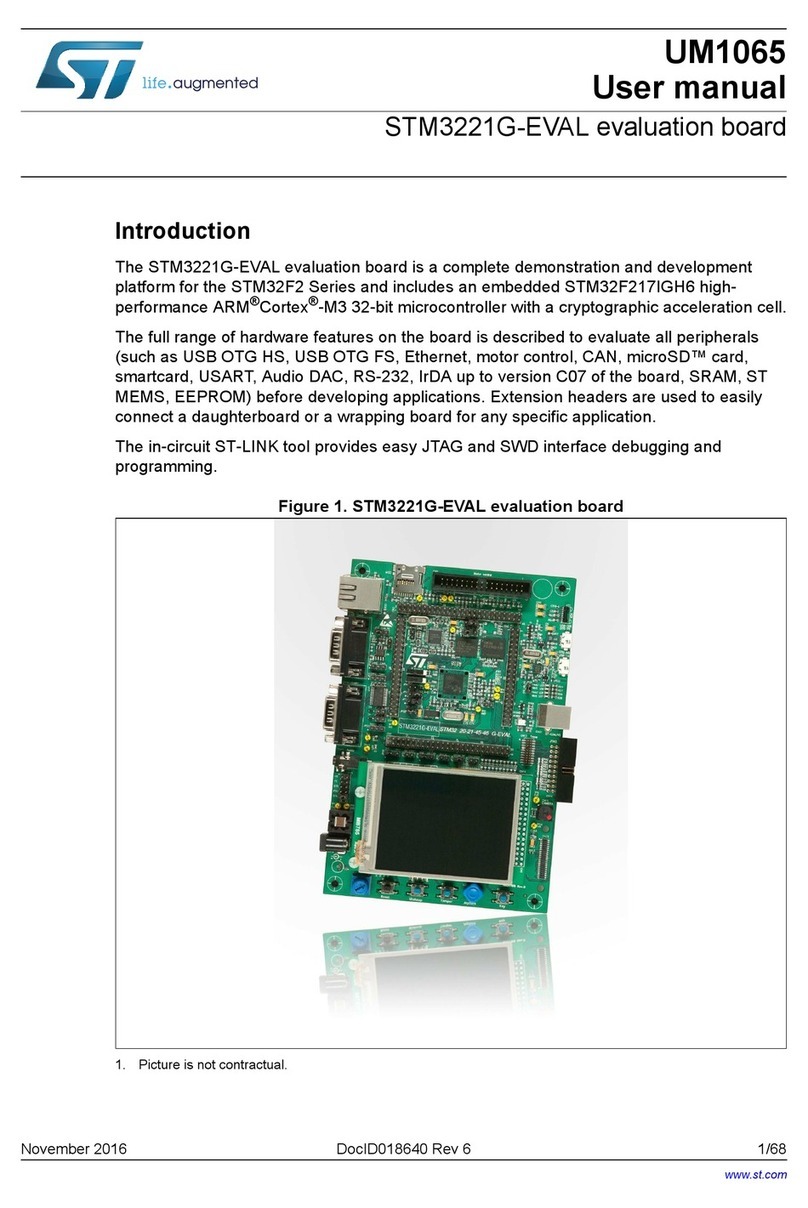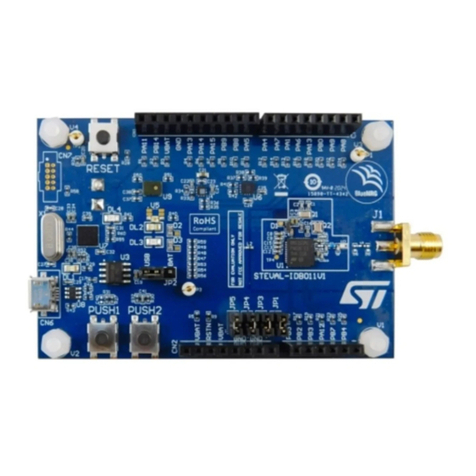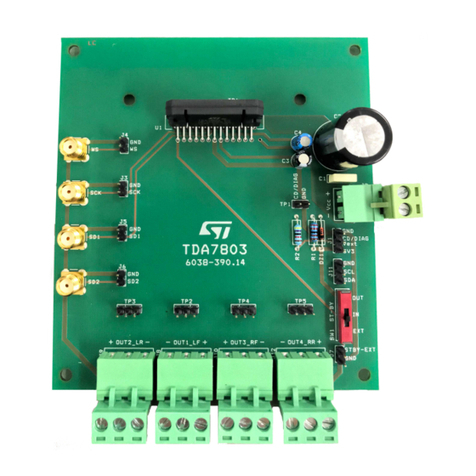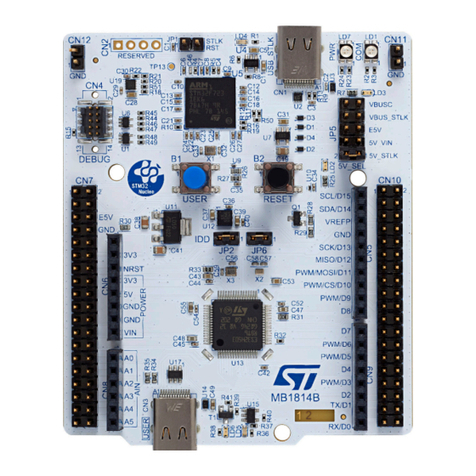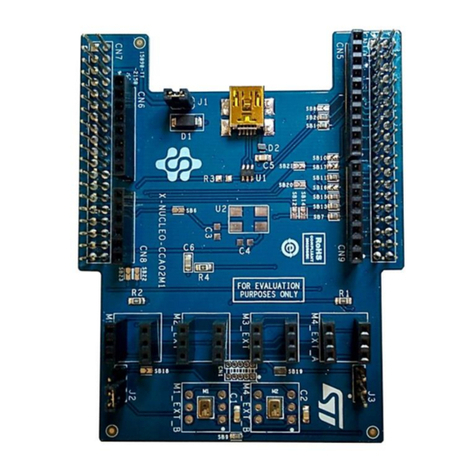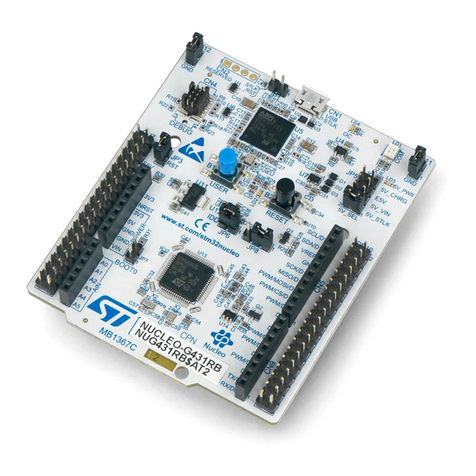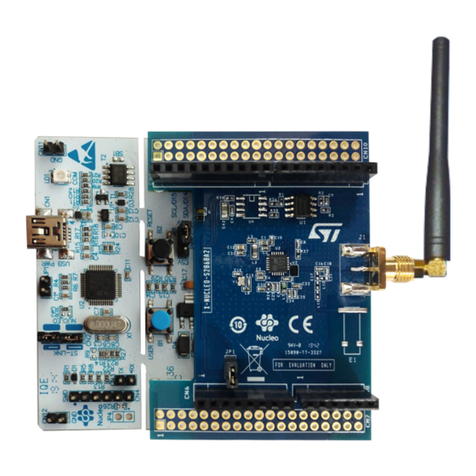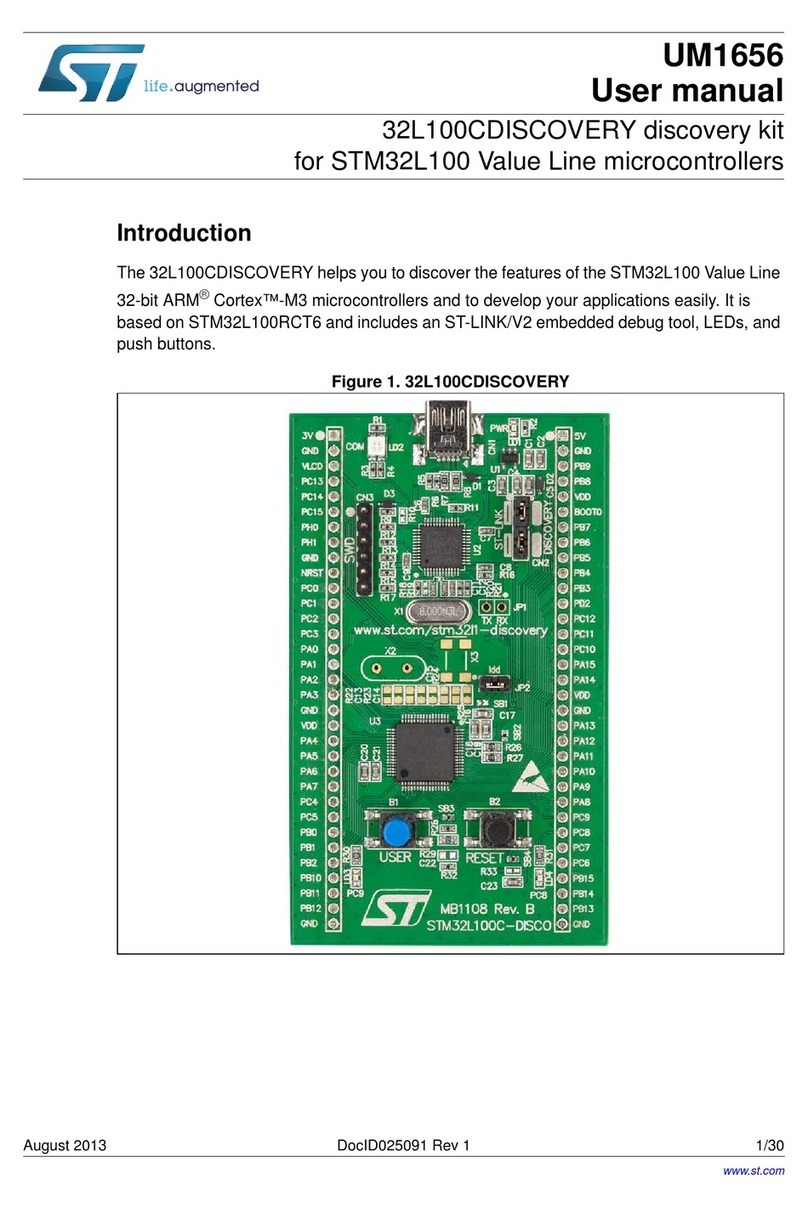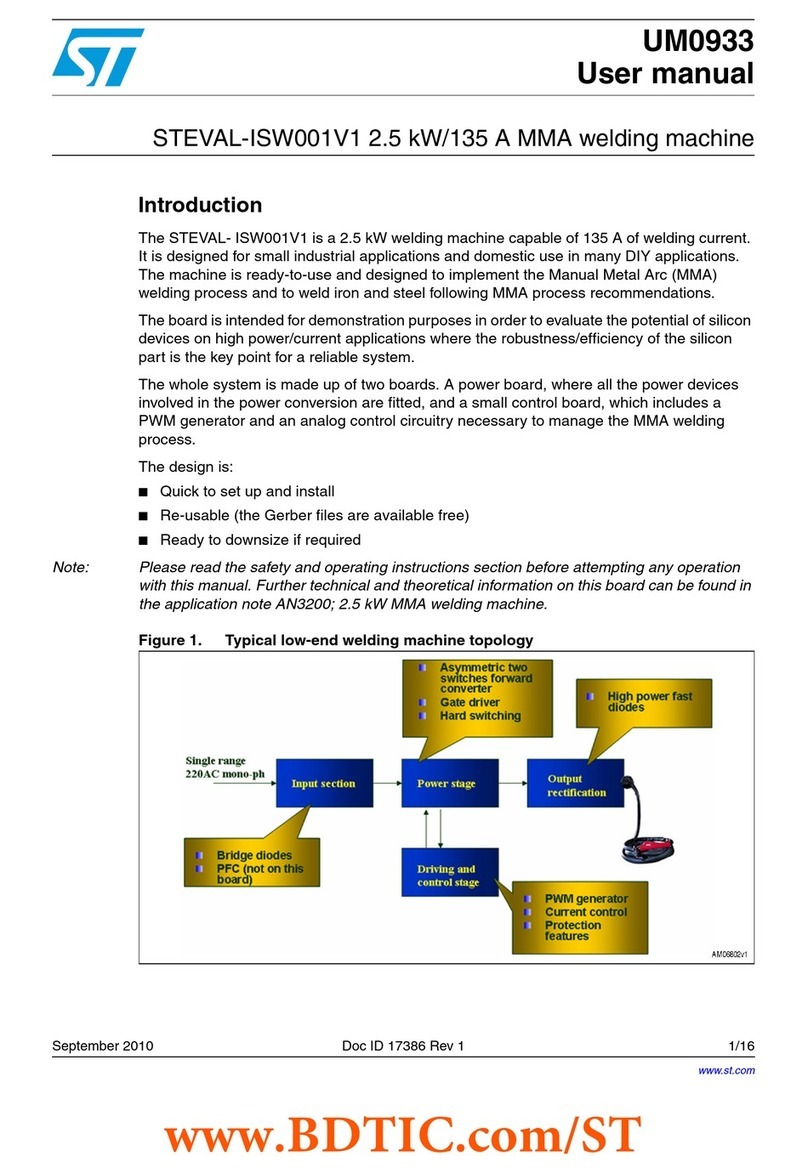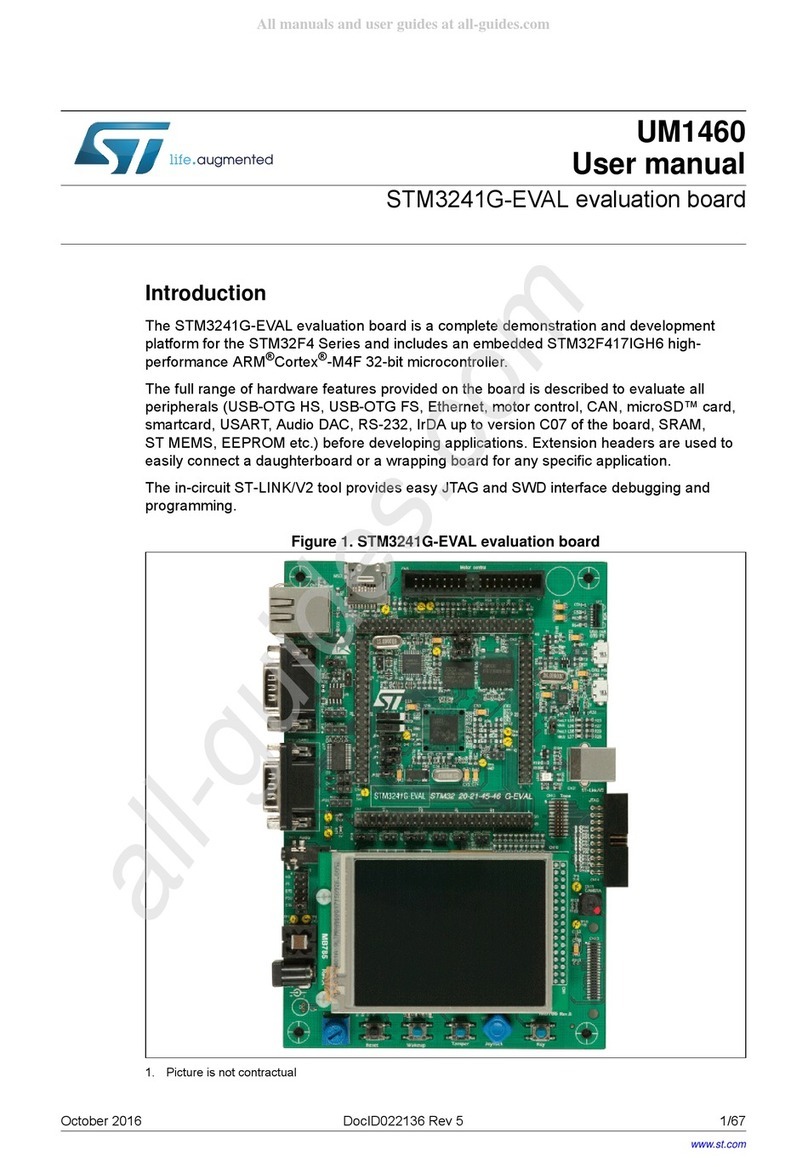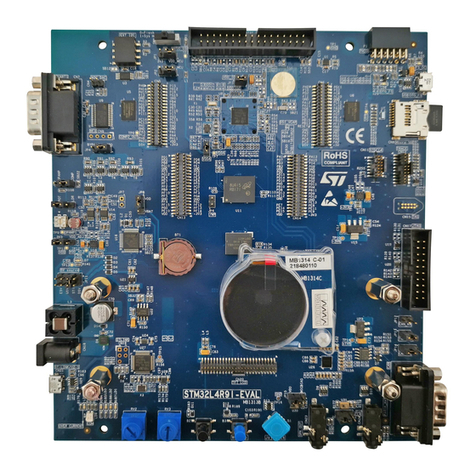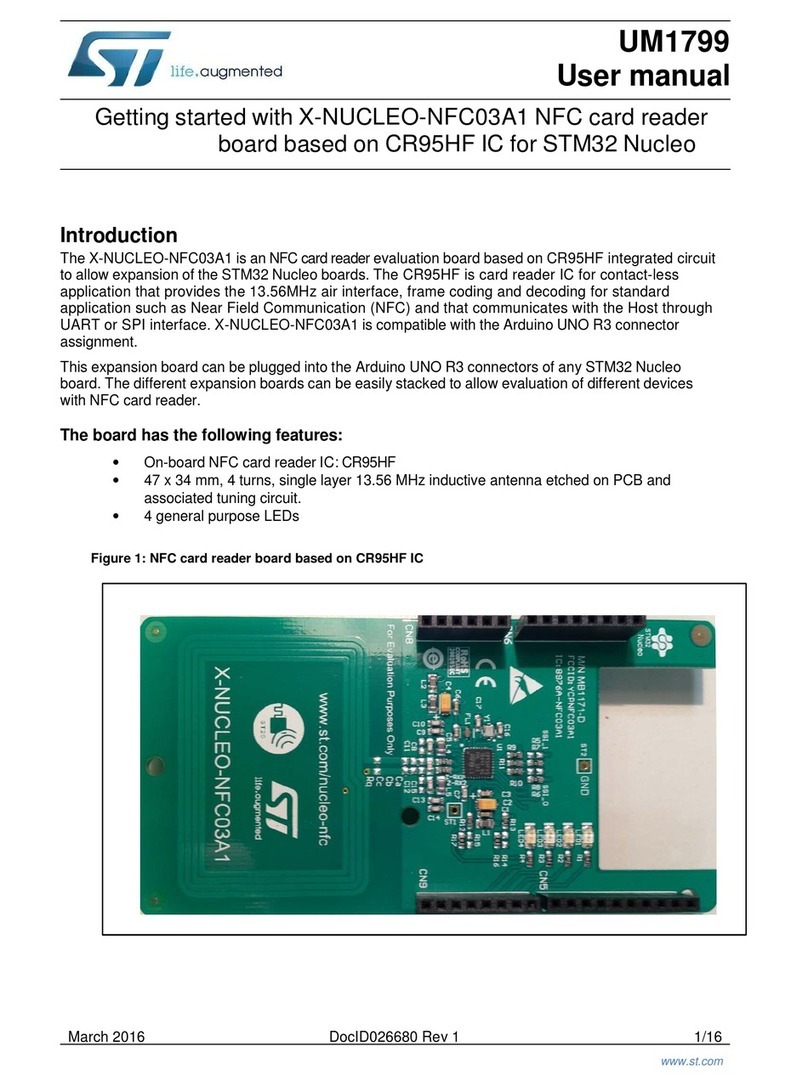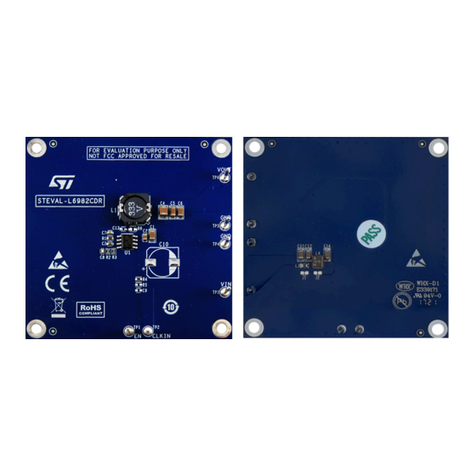
Contents UM0971
2/45 Doc ID 17701 Rev 1
Contents
1 STEVAL-IHM031V1 features . . . . . . . . . . . . . . . . . . . . . . . . . . . . . . . . . . . 6
1.1 Electrical and functional characteristics . . . . . . . . . . . . . . . . . . . . . . . . . . . 6
1.2 Target application . . . . . . . . . . . . . . . . . . . . . . . . . . . . . . . . . . . . . . . . . . . . 6
1.3 Safety and operating instructions . . . . . . . . . . . . . . . . . . . . . . . . . . . . . . . . 6
1.3.1 General . . . . . . . . . . . . . . . . . . . . . . . . . . . . . . . . . . . . . . . . . . . . . . . . . . 6
1.3.2 Demonstration board intended use . . . . . . . . . . . . . . . . . . . . . . . . . . . . . 7
1.3.3 Demonstration board installation . . . . . . . . . . . . . . . . . . . . . . . . . . . . . . . 7
1.3.4 Electronic connections . . . . . . . . . . . . . . . . . . . . . . . . . . . . . . . . . . . . . . . 7
1.3.5 Demonstration board operation . . . . . . . . . . . . . . . . . . . . . . . . . . . . . . . . 7
2 Board description . . . . . . . . . . . . . . . . . . . . . . . . . . . . . . . . . . . . . . . . . . . 8
2.1 System architecture . . . . . . . . . . . . . . . . . . . . . . . . . . . . . . . . . . . . . . . . . . 8
2.2 Power supply circuit . . . . . . . . . . . . . . . . . . . . . . . . . . . . . . . . . . . . . . . . . . 9
2.2.1 LD1117xx33 and LD1117xx50 characteristics . . . . . . . . . . . . . . . . . . . . 9
2.2.2 L4976 characteristics . . . . . . . . . . . . . . . . . . . . . . . . . . . . . . . . . . . . . . . 12
2.2.3 Inverse polarity protection . . . . . . . . . . . . . . . . . . . . . . . . . . . . . . . . . . . 12
2.3 Gate driving . . . . . . . . . . . . . . . . . . . . . . . . . . . . . . . . . . . . . . . . . . . . . . . 12
2.4 Three-phase inverter power switches . . . . . . . . . . . . . . . . . . . . . . . . . . . . 14
2.4.1 STS8DNH3LL characteristics . . . . . . . . . . . . . . . . . . . . . . . . . . . . . . . . 14
2.5 BEMF conditioning network . . . . . . . . . . . . . . . . . . . . . . . . . . . . . . . . . . . 15
2.5.1 Zero-crossing methods for BEMF reading . . . . . . . . . . . . . . . . . . . . . . . 16
2.5.2 Low amplitude BEMF signal amplification . . . . . . . . . . . . . . . . . . . . . . . 16
2.5.3 Virtual neutral (or natural) point reconstruction . . . . . . . . . . . . . . . . . . . 17
2.6 Current sensing and conditioning network . . . . . . . . . . . . . . . . . . . . . . . . 18
2.6.1 Bipolar current reading configuration . . . . . . . . . . . . . . . . . . . . . . . . . . . 18
2.6.2 Unipolar current reading configuration . . . . . . . . . . . . . . . . . . . . . . . . . . 19
2.6.3 Three-shunt current reading configuration . . . . . . . . . . . . . . . . . . . . . . . 21
2.6.4 Single-shunt current reading configuration . . . . . . . . . . . . . . . . . . . . . . 21
2.6.5 Overcurrent protection . . . . . . . . . . . . . . . . . . . . . . . . . . . . . . . . . . . . . . 22
2.7 Temperature sensing and protection . . . . . . . . . . . . . . . . . . . . . . . . . . . . 23
3 Descriptions of connectors and jumpers . . . . . . . . . . . . . . . . . . . . . . . 24
3.1 Jumper description . . . . . . . . . . . . . . . . . . . . . . . . . . . . . . . . . . . . . . . . . . 24

